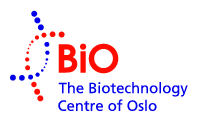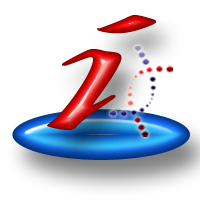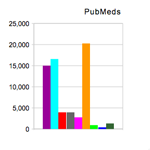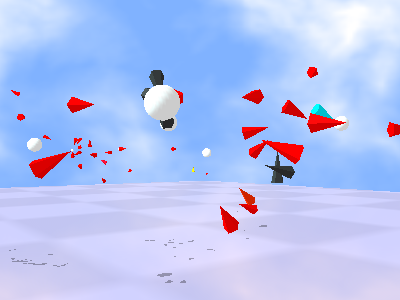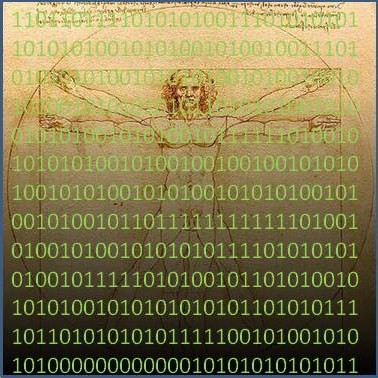Difference between revisions of "Donaldson Group"
PaulBoddie (talk | contribs) (Modernised the projects and courses tables. Removed the blue borders/rules.) |
|||
| Line 20: | Line 20: | ||
== Projects == | == Projects == | ||
| − | {|class="wikitable" style="text-align:left; clear: both | + | {|class="wikitable" style="text-align:left; clear: both" border="0" cellpadding="10" |
|<imagemap> | |<imagemap> | ||
Image:iRefIndex_logo.png|100x100px | Image:iRefIndex_logo.png|100x100px | ||
default [[iRefIndex]] | default [[iRefIndex]] | ||
</imagemap> | </imagemap> | ||
| − | | [[iRefIndex | + | | |
| + | === [[iRefIndex]] === | ||
| + | |||
| + | [[iRefIndex|http://irefindex.uio.no/]]<br/> iRefIndex (interaction Reference Index) provides an index of protein interactions available in a number of primary interaction databases including BIND, BioGRID, CORUM, DIP, HPRD, IntAct, MINT, MPact, MPPI and OPHID. This index allows the user to search for a protein and retrieve a non-redundant list of interactors for that protein. | ||
iRefIndex uses the Sequence Global Unique Identifier (SEGUID) to group proteins and interactions into redundant groups. This method allows users to integrate their own data with the iRefIndex in a way that ensures proteins with the exact same sequence will be represented only once. | iRefIndex uses the Sequence Global Unique Identifier (SEGUID) to group proteins and interactions into redundant groups. This method allows users to integrate their own data with the iRefIndex in a way that ensures proteins with the exact same sequence will be represented only once. | ||
| Line 33: | Line 36: | ||
default [[iRefScape]] | default [[iRefScape]] | ||
</imagemap> | </imagemap> | ||
| − | | [[iRefScape | + | | |
| + | === [[iRefScape]] === | ||
| + | |||
| + | iRefScape is a plugin for [http://www.cytoscape.org/ Cytoscape] that exposes iRefIndex data as a navigable graphical network. | ||
|- | |- | ||
|<imagemap> | |<imagemap> | ||
| Line 39: | Line 45: | ||
default [http://wodaklab.org/iRefWeb/] | default [http://wodaklab.org/iRefWeb/] | ||
</imagemap> | </imagemap> | ||
| − | | [http://wodaklab.org/iRefWeb/ | + | | |
| + | === [http://wodaklab.org/iRefWeb/ iRefWeb] === | ||
| + | |||
| + | [http://wodaklab.org/iRefWeb/ http://wodaklab.org/iRefWeb/]<br/> iRefWeb provides a searchable web interface to the iRefIndex. iRefWeb also provides visualization of statistics related to iRefIndex and allows users to compare annotation of the same publication by multiple interaction databases. | ||
iRefWeb is a collaborative project with the [http://wodaklab.org/ws/ Wodak group] at the Hospital for Sick Children in Toronto. | iRefWeb is a collaborative project with the [http://wodaklab.org/ws/ Wodak group] at the Hospital for Sick Children in Toronto. | ||
| Line 47: | Line 56: | ||
default [[Magrathea]] | default [[Magrathea]] | ||
</imagemap> | </imagemap> | ||
| − | | [[Magrathea | + | | |
| + | === [[Magrathea]] === | ||
| + | |||
| + | [[Magrathea|http://magrathea.uio.no/]]<br/> Magrathea is prototype software demostrating the principals of coordinated agent modeling. | ||
|- | |- | ||
|<imagemap> | |<imagemap> | ||
| Line 53: | Line 65: | ||
default [[The Biolibrarian Proposal]] | default [[The Biolibrarian Proposal]] | ||
</imagemap> | </imagemap> | ||
| − | | [[The Biolibrarian Proposal | + | | |
| + | === [[The Biolibrarian Proposal]] === | ||
The Biolibrarian proposal proposes the creation of new positions at university libraries around the world. | The Biolibrarian proposal proposes the creation of new positions at university libraries around the world. | ||
| Line 62: | Line 75: | ||
default [[DiG:_Disease_groups]] | default [[DiG:_Disease_groups]] | ||
</imagemap> | </imagemap> | ||
| − | | [[DiG: | + | | |
| + | === [[DiG: Disease groups|DiG: Disease Groups]] === | ||
| + | |||
| + | [[DiG:_Disease_groups|http://donaldson.uio.no/wiki/DiG:_Disease_groups]]<br/> The Disease Groups project groups together phenotypically related disease-gene associations found in OMIM's Morbid Map. The resulting map of disease genes may be used to explore relationships between disease genes in the human protein-interactome. | ||
|- | |- | ||
|<imagemap> | |<imagemap> | ||
| Line 68: | Line 84: | ||
default [[Bioscape]] | default [[Bioscape]] | ||
</imagemap> | </imagemap> | ||
| − | | [[Bioscape | + | | |
| + | === [[Bioscape]] === | ||
| + | |||
| + | http://bioscape.uio.no/<br/> Bioscape is our in-house text-mining system used to locate gene and protein mentions in PubMed abstracts. | ||
|} | |} | ||
| Line 90: | Line 109: | ||
==Courses== | ==Courses== | ||
| − | {|class="wikitable" style="text-align:left | + | {|class="wikitable" style="text-align:left" border="0" cellpadding="10" |
|- | |- | ||
|<imagemap> | |<imagemap> | ||
Image:Bioinfo_course_logo.jpg|100x100px | Image:Bioinfo_course_logo.jpg|100x100px | ||
default [[Bioinformatics course]] | default [[Bioinformatics course]] | ||
| − | </imagemap> || [[Bioinformatics_course| | + | </imagemap> || |
| + | === [[Bioinformatics_course|Bioinformatics for molecular biology]] === | ||
A new, two-week, intensive bioinformatics course that covers various aspects of bioinformatics analyses for molecular biology. Statistics, multiple hypothesis testing, microarray analysis, sequence alignments, working with protein structures, protein interaction networks and more. The schedule can be viewed here '''http://bioinformatics.uio.no/wiki/Bioinformatics_course''' along with all material used in the course. The course is composed of lectures and practical tutorials. | A new, two-week, intensive bioinformatics course that covers various aspects of bioinformatics analyses for molecular biology. Statistics, multiple hypothesis testing, microarray analysis, sequence alignments, working with protein structures, protein interaction networks and more. The schedule can be viewed here '''http://bioinformatics.uio.no/wiki/Bioinformatics_course''' along with all material used in the course. The course is composed of lectures and practical tutorials. | ||
| − | |||
|} | |} | ||
| Line 105: | Line 124: | ||
--> | --> | ||
| − | Ian Donaldson is organizing this year's Molecular Biotechnology Course at the Biotechnology Centre of Oslo. You can find the MBV9100 course web page [https://www.biotek.uio.no/events/courses_workshops/2011/MBV9100BTS.html here] and the latest schedule [[ | + | Ian Donaldson is organizing this year's Molecular Biotechnology Course at the Biotechnology Centre of Oslo. You can find the MBV9100 course web page [https://www.biotek.uio.no/events/courses_workshops/2011/MBV9100BTS.html here] and the latest schedule [[MBV9100|here]]. |
==Contact== | ==Contact== | ||
ian.donaldson at biotek.uio.no | ian.donaldson at biotek.uio.no | ||
Revision as of 14:58, 17 October 2011
The Donaldson Group at the Biotechnology Centre of Oslo
Research Interests
Our primary interests include protein interaction data consolidation, text mining and data mining especially with respect to diseases.
Our recent work on a consolidated protein interaction database can be found at http://irefindex.uio.no/ .
Projects
iRefIndexhttp://irefindex.uio.no/ iRefIndex uses the Sequence Global Unique Identifier (SEGUID) to group proteins and interactions into redundant groups. This method allows users to integrate their own data with the iRefIndex in a way that ensures proteins with the exact same sequence will be represented only once. | |
iRefScapeiRefScape is a plugin for Cytoscape that exposes iRefIndex data as a navigable graphical network. | |
iRefWebhttp://wodaklab.org/iRefWeb/ iRefWeb is a collaborative project with the Wodak group at the Hospital for Sick Children in Toronto. | |
Magratheahttp://magrathea.uio.no/ | |
The Biolibrarian ProposalThe Biolibrarian proposal proposes the creation of new positions at university libraries around the world. These people would act as local biocurators that help local university researchers submit data to relevant biological databases. | |
DiG: Disease Groupshttp://donaldson.uio.no/wiki/DiG:_Disease_groups | |
Bioscapehttp://bioscape.uio.no/ |
Group Members
- Ian Donaldson
- Paul Boddie
- Sabry Razick
- Antonio Mora
Past Group Members
- Katerina Michalickova
- Hanna Nemchenko
Local Seminar Series
The Biotechnology Centre of Oslo holds a weekly Tuesday seminar at Forskningsparken, Gaustadalléen 21, Oslo.
The Computational Life Science seminars are held every Wednesday at Ole-Johan Dahls hus, located at Gaustadalléen 23D, Oslo (opposite the Forskningsparken main entrance).
Courses
Bioinformatics for molecular biologyA new, two-week, intensive bioinformatics course that covers various aspects of bioinformatics analyses for molecular biology. Statistics, multiple hypothesis testing, microarray analysis, sequence alignments, working with protein structures, protein interaction networks and more. The schedule can be viewed here http://bioinformatics.uio.no/wiki/Bioinformatics_course along with all material used in the course. The course is composed of lectures and practical tutorials. |
Introductory Perl is taught by Antonio Mora and Ian Donaldson as part of the MBV3070 course. The slides for these lectures are available here at Perl lectures for MBV3070.
Ian Donaldson is organizing this year's Molecular Biotechnology Course at the Biotechnology Centre of Oslo. You can find the MBV9100 course web page here and the latest schedule here.
Contact
ian.donaldson at biotek.uio.no
